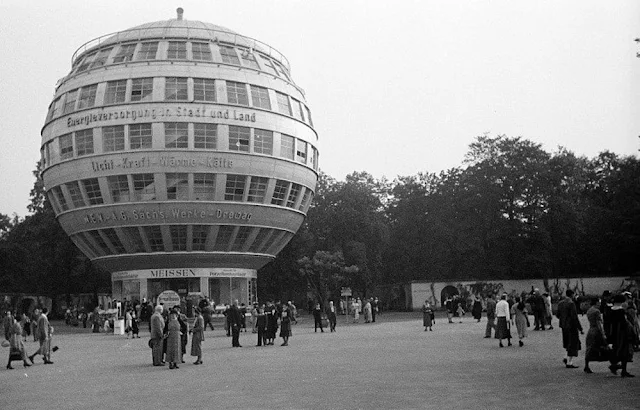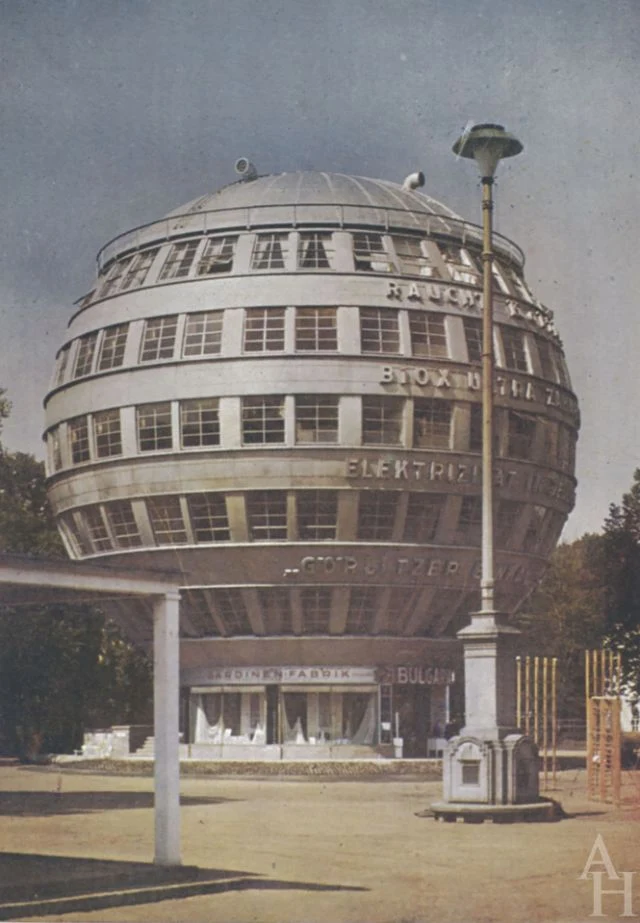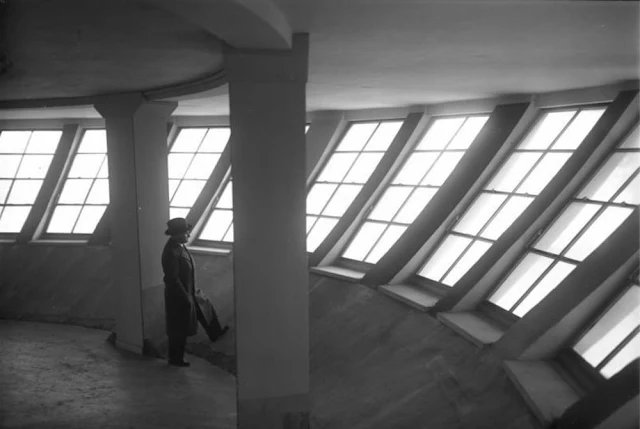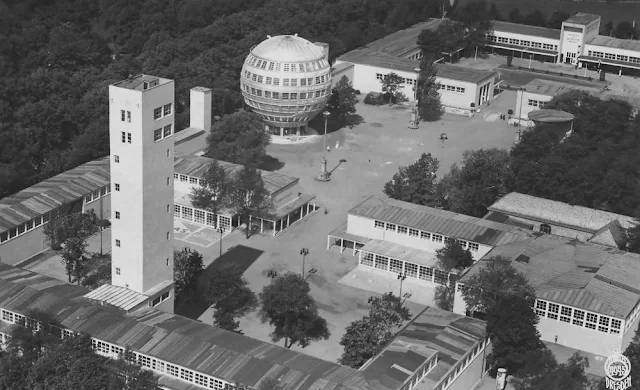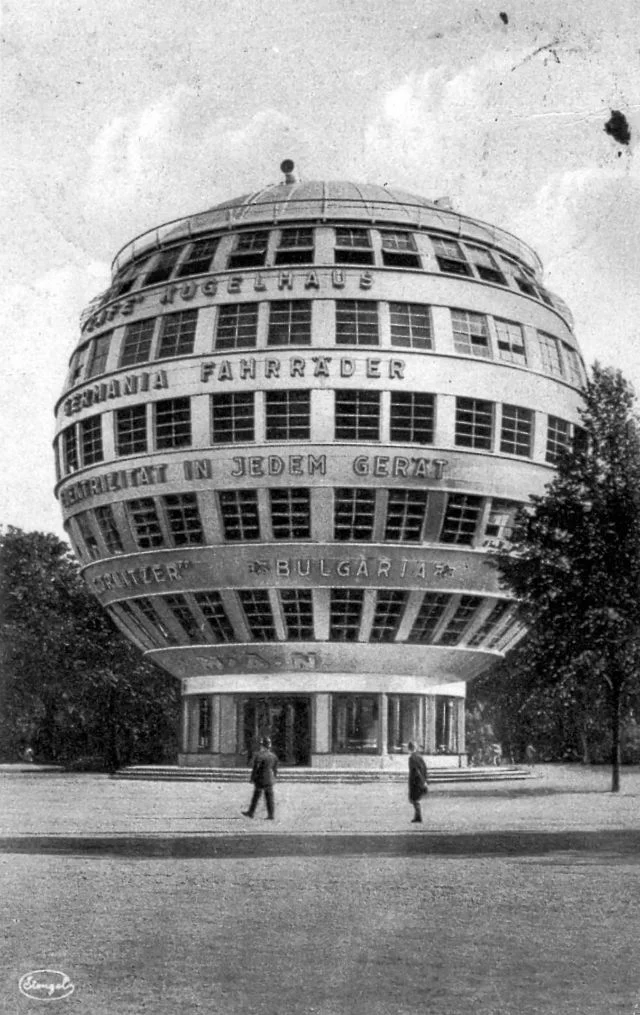Plans were laid to build a row of them, like a galaxy of planets in orbit. That was the spirit of the age. Very “futurist”. It hosted exhibition rooms and a restaurant business and is considered the first ever spherical building in the world. Described by Nazi press as “degenerate art to be destroyed” and “un-German”, the building only stood for 10 years and was demolished in 1938.
The Kugelhaus was part of the annual exhibition Deutscher Arbeit – Die Technische Stadt in 1928 and had a diameter of 24 meters. The spherical body was mounted on a neck of 11.5 meters in diameter and 4 meters in height. The total height of the building was 26.5 meters, with a built-up area of only 110 square meters, the enclosed space was 7600 cubic meters.
There were six levels and a passenger elevator. In the building one could look upwards or downwards through a circular, atrium-like opening. Only the top floor with the restaurant had a closed floor space. The window front of the restaurant allowed a good view of the nearby exhibition area.
The load-bearing structure of the building was built in steel skeleton construction. The metallic outer skin was made of aluminum sheet. The ball house was designed and built by MAN’s Gustavsburg plant .
From 1928 it was used in several exhibitions at the Municipal Exhibition Center as a presentation room for numerous industrial companies, mostly in the field of electrical engineering and energy. The last demonstrable integration into an exhibition concept took place within the imperial garden show of 1936. In terms of its architectural effect, it had been built in a central location. The ball house stood between the so-called fountain and tower yard, two self-contained hall complexes on the exhibition grounds, and opposite the concert venue with its large restaurant area. In this way, it was at the intersection of two major axes of development and was thus a prominent structure within numerous visual relationships.
The building was demolished in 1938 because no buyer or operator was found. Previously, it had been attacked by the National Socialist press as a “degenerate technique”. According to other sources, the ball house was destroyed in 1938 as supposedly “un-German”.
Today it is the main station of the park railway and directly opposite to the round tower of the transparent factory in which the Volkswagen AG stores the finished vehicles. In the foyer of the Transparent Factory, a spherical cinema hall recalls the ball house.
